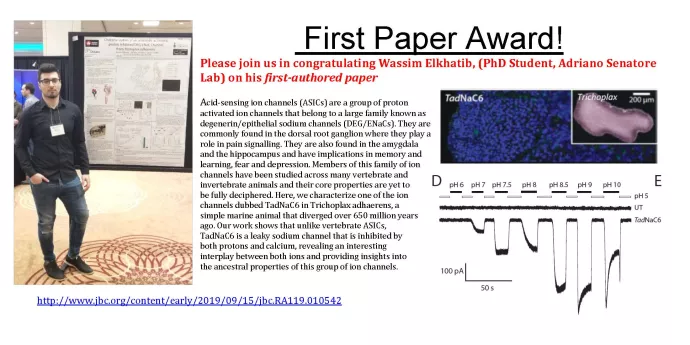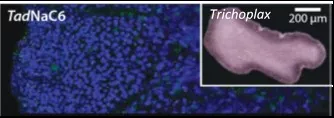
Wassim Elkhatib, PhD Student (Senatore Lab) first author on Tricoplax adhaerens paper in JBC
Journal of Biological Chemistry published "A Na+ leak channel cloned from Trichoplax adhaerens extends extracellular pH and Ca2+ sensing for the DEG/ENaC family close to the base of Metazoa" mid September 2019, with Wassim Elkhatib as first author.
PhD student in Prof. Senatore Lab, Wassim explained that:
"Acid-sensing ion channels (ASICs) are a group of proton activated ion channels that belong to a large family known as degenerin/epithelial sodium channels (DEG/ENaCs). They are commonly found in the dorsal root ganglion where they play a role in pain signalling. They are also found in the amygdala and the hippocampus and have implications in memory and learning, fear and depression. Members of this family of ion channels have been studied across many vertebrate and invertebrate animals and their core properties are yet to be fully deciphered. Here, we characterize one of the ion channels dubbed TadNaC6 in Trichoplax adhaerens, a simple marine animal that diverged over 650 million years ago. Our work shows that unlike vertebrate ASICs, TadNaC6 is a leaky sodium channel that is inhibited by both protons and calcium, revealing an interesting interplay between both ions and providing insights into the ancestral properties of this group of ion channels"
Congrats, Wassim!

